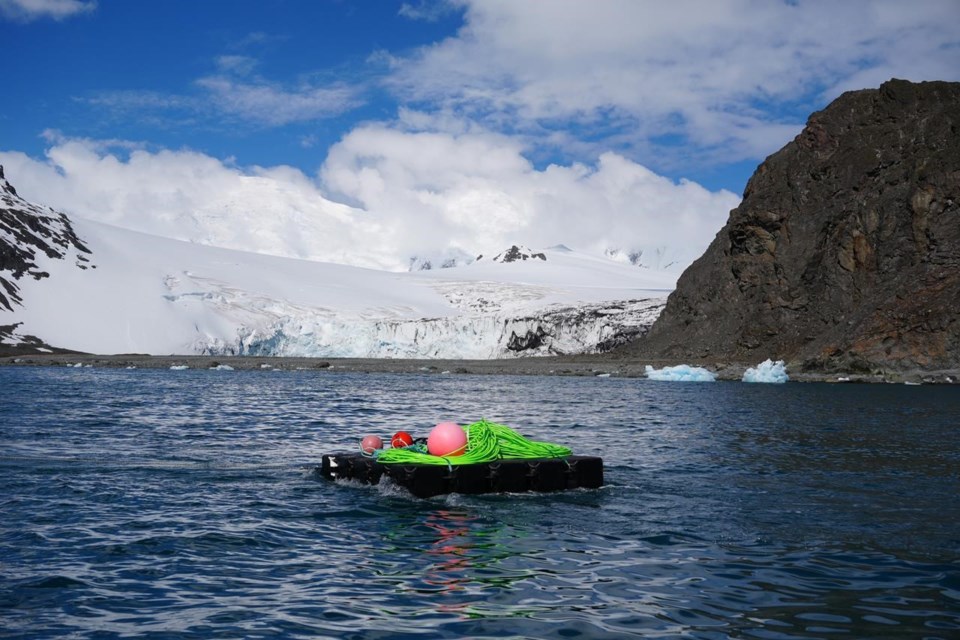VICTORIA — A cache of scientific equipment that could fit in the back of an SUV has been lowered into the Southern Ocean, north of the Antarctic Peninsula, and is already streaming open-source data for anyone wanting to monitor the ocean's health.
Scientists say the underwater observatory collects measurements, including temperature, oxygen concentration and chlorophyll levels, and will fill a gap in data to help understand the impacts of climate change in the waters around Antarctica.
The project is being jointly run by Ocean Networks Canada, out of the University of Victoria, and the Spanish National Research Council.
Ocean Networks' CEO Kate Moran says data in the Antarctic, prior to the station being installed, primarily came from surface satellites, some floating research equipment and people on cruises.
The Canadian-built equipment is now about 23 metres deep near a Spanish research station on Livingston Island in the South Shetlands Archipelago, where it is expected to stay for years.
Kohen Bauer, a senior staff scientist at Ocean Networks Canada, says the Southern Ocean and its circumpolar current are critical to how much the water in the area circulates, and having long-term data from a stationary location will help researchers spot changes.
The current that circles the continent connects basins for the Atlantic, Indian and South Pacific oceans.
The observatory, which also measures conductivity, depth and clarity in the water, posts updated data to Ocean Networks Canada's online dashboard about every 30 minutes.
"This is meant to be a long, continuous, time series and there's actually very few of those in the world, let alone in the Southern Ocean," Bauer says.
"We're trying to establish a continuous time series of these ocean variables. And it's with these established time series that we can start to ask, or interpret the data, in the context of key questions, both at the local and actually at the regional and potentially global scale."
Data could pick up changes to sea ice, glacier formation and ice retreat, he says.
"Then, ultimately, it's about connecting those types of observations to, let's say, more global questions such as climate change," he says.
Moran says understanding how the ocean is absorbing the carbon dioxide emitted by greenhouse gases helps to predict the future.
"Colder oceans, like the Arctic, and the Southern Ocean, can absorb more CO2 than other places," she says.
"So, understanding how that is happening now, and how we can forecast it, helps us to understand further the natural carbon system to help us forecast the future, no matter what happens in terms of emissions."
Last year, following a symposium focused on the Southern Ocean, 300 scientists from 25 nations issued a statement calling for better observation.
It says the ocean has seen record low levels of sea-ice, record high temperatures and dramatic shifts in penguin populations, among other changes.
"The chronic lack of observations for the Southern Ocean challenges our ability to detect and assess the consequences of change," the statement says.
"As such, it is more pressing than ever to have a sustained and co-ordinated Southern Ocean observing system to provide an understanding of current conditions, inform predictions of future states, and support policies and regulations for the benefit of society."
David Hik, the chief scientist for Polar Knowledge Canada, which manages Canada’s scientific contributions in the Antarctic under the Ministry of Northern Affairs, says the observatory and the work with Spain is an example of the kind of contribution Canada can make to Antarctic science.
"Any new observations are going to have a significant impact on our ability to better understand what's happening in those environments, and how they're changing over time," he says.
This report by The Canadian Press was first published Jan. 18, 2024.
Ashley Joannou, The Canadian Press
